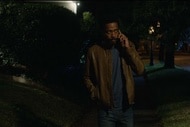Create a free profile to get unlimited access to exclusive videos, sweepstakes, and more!
Batman writer Scott Snyder reveals the crucial New 52 story demand that almost drove him to quit

This year marks the 10th anniversary of one of the biggest comics publishing initiatives in modern history: The New 52, better known as that time DC Comics rebooted its entire line of superhero characters in an effort to revitalize old readers and draw in new ones. How well that worked in the end is still a matter of debate among fans, but when it was launching in September of 2011 there was no debating that the New 52 was the biggest thing in comics at the time.
The New 52 has since, of course, faded into the rearview as DC Comics has moved on to other initiatives like DC Rebirth, and characters have reverted to various degrees of their pre-New 52 selves. Despite those reversions, though, for those who were reading those comics at the time, the New 52-era changes in DC continuity remain impactful and influential, particularly when you look at the various DC Comics-inspired films of the last decade, and how the launch impacted the look and feel of those characters.
To underscore the event's impact and its legacy, Polygon released an exhaustive oral history of the New 52 from inception to backlash this week. The whole thing is well worth reading, but some of the most fascinating elements of the story stem from various editorial disagreements and inconsistencies that made crafting the stories of the reboot rather difficult at times. Because they envisioned new versions of their iconic characters, DC wanted creators to tell new stories, but they also sometimes underscored that the new-ness of those stories could only go so far.
This conflict became apparent even on New 52 titles that rank among the most enduring, like the Batman run from writer Scott Snyder and artist Greg Capullo. Widely viewed as one of the high points of the launch, and the book that put Snyder into the stratosphere as a superhero comics architect, this version of Batman launched with the now-famous "Court of Owls" storyline which revealed a massive conspiracy within Gotham City, and a secret society that not even Batman knew about. With that came the reveal of a character named Lincoln March, a Court of Owls inductee who would go on to claim that he was actually Thomas Wayne's long-lost son, and therefore Bruce Wayne's long-lost brother.
According to Snyder, who participated in the oral history interviews, a key sticking point early in his time writing Batman was DC editorial's argument that Bruce should be able to clearly solve the mystery at the heart of the "Court of Owls" and "City of Owls" storylines, and therefore know for sure if Lincoln was telling the truth. Snyder was so adamantly opposed to the idea that he apparently considered quitting the project.
"We’d finished [the first Batman storyline] 'Court of Owls.' It was at the printer, and word came down from above that they weren’t sure that they wanted Batman not to be able to solve the mystery of the Owls; whether Lincoln March was his brother," Snyder recalled. "They wanted us to change it, to make it so that he’d definitively solved it. For me, that would have changed the entire story, because the point of the story was just the opposite. I remember standing in Target, pushing a cart of paper towels, screaming into the phone, 'You go down the hallway and you tear up my contract!'"
As Snyder alluded to in his comments, a key element of the "Court of Owls" story was the idea that there are some mysteries even Batman can't solve, and that for all his time spent fighting for Gotham's interests, the city still held secrets that he couldn't fully grasp. The writer eventually got his way, and Lincoln March's true identity remains a mystery even now in DC Comics continuity.
Snyder also went on to make an interesting key point about various narrative issues surrounding the New 52. The launch was plagued with reader confusion thanks to things like skewed timelines -- some books took place in the "present," while others pulled back to five years in the past, and so on -- and hints of an overarching narrative that never quite fully materialized. It was this later issue for Snyder -- who went on to write Justice League and other key DC events like Dark Nights: Metal -- that became one of the lauch's biggest setbacks.
"Honestly, if you want to know what I think the big problem with it was, from a structural standpoint, the biggest problem I had with it architecturally as an initiative was that it didn’t really have rules about the way continuity was going to work. Ultimately, we didn’t have an uber-story fully worked out. There were sort of hints of one with Pandora and Flashpoint, there were good ideas there, but there wasn’t a big narrative."
For more on the rise and fall of the New 52, including comments from former DC co-publisher Dan DiDio on the risks and rewards of the launch, check out Polygon's full oral history.


























